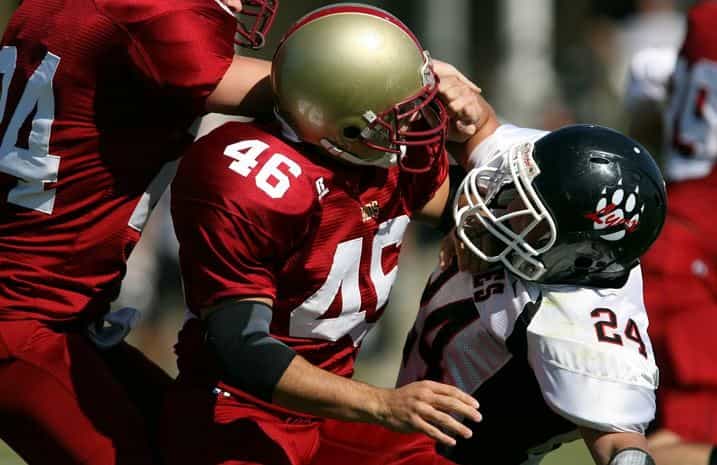College football spreads are a popular way to wager on games. Unlike betting on a simple win or loss, spreads require predicting the margin by which a team will win. This means betting on whether a team will win by more or less than a specified number of points.
However, betting on college football spreads can be tricky. The large number of teams and the unpredictable nature of college sports make it hard to pick winners consistently. Moreover, injuries, weather conditions, and other variables can significantly affect the outcome, adding layers of complexity.

Despite these challenges, there are proven strategies that can help bettors navigate the complexities of college football spreads. These systems, when used correctly, can increase the chances of making successful bets. Check them out here:
Value Betting
Value betting means finding bets where the bookmaker’s odds are greater than the actual likelihood of the event happening. In college football betting, this means finding games where you believe the bookmakers inaccurately set the spread.
The main benefit of value betting is that it allows bettors to find profitable opportunities where the bookmakers might have made a mistake. You can achieve long-term profitability by consistently placing bets where the odds are in your favor.
However, identifying value bets requires a deep understanding of the teams and the ability to analyze the odds effectively. This can be challenging for beginners. To overcome this, it’s helpful to use statistical models and stay updated with team news and performance metrics.
Fade the Public
Fading the public is a strategy in which bettors go against the majority opinion. In college football, public betting trends often favor popular teams, causing the odds to shift and creating value on the opposite side.
This system benefits bettors by capitalizing on inflated odds. When the public heavily bets on one side, bookmakers adjust the spread to balance their risk, sometimes creating favorable conditions for the less popular team.
One challenge with this strategy is that it requires patience and the ability to bet against the crowd, which can be psychologically challenging. Staying disciplined and avoiding the influence of public opinion is critical to successfully using this system.
Situational Handicapping
Situational handicapping involves analyzing the context of a game beyond just the statistical data. In basketball, this may include (but is not limited to) factors like home-field advantage, travel fatigue, weather conditions, and motivation levels of the teams.
The advantage of situational handicapping is that it provides a more holistic view of the game, allowing bettors to make more informed decisions. Understanding the nuances of each situation can help identify spreads that don’t accurately reflect the true potential of the teams.
The main challenge is the subjective nature of this analysis. Different bettors may interpret situations differently, leading to varied conclusions. To mitigate this, it’s helpful to combine situational handicapping with other statistical methods and maintain a consistent approach.
Power Rankings
Power rankings are a system where teams are rated based on their overall strength. These rankings can be used to create spreads that reflect the true comparative strength of the teams, independent of public opinion and bookmaker adjustments.
Using power rankings helps bettors make more objective decisions. A systematic evaluation of team performance can highlight disparities between the perceived and actual strengths of the teams. This method involves ranking teams based on various performance metrics, such as offensive and defensive efficiency, turnover rates, and strength of schedule.
Through power rankings, bettors can identify spreads that may offer betting value. Teams consistently outperforming or underperforming relative to their rankings can present profitable opportunities. Power rankings also help assess matchups more accurately, as they strip away biases and focus purely on statistical analysis. This data-driven approach can lead to more informed bets and potentially higher returns.
However, developing accurate power rankings can be time-consuming and requires a thorough understanding of the game. It involves regularly updating the rankings based on recent performance and other relevant factors. Leveraging statistical software and databases can help streamline this process.
Betting Against the Spread (ATS) Trends
Betting against the spread (ATS) trends involves looking at historical performance data to identify patterns and trends. This can include how teams perform as favorites or underdogs, their record at home versus away, and their performance against certain types of opponents.
The benefit of using ATS trends is that it relies on empirical data, which can highlight consistent patterns that are not immediately obvious. This can provide a strategic edge in college football betting.
A potential challenge with this approach is that past performance does not always predict future results. Teams and circumstances change, so it’s crucial to use ATS trends as one of many tools in your betting strategy. Combining ATS trends with current data and situational analysis can improve accuracy.
Final Thoughts
Betting on college football spreads presents numerous challenges, from the unpredictability of the games to the complex factors influencing outcomes. Thankfully, the systems mentioned here can help tackle these difficulties and improve your betting strategy. Still, it’s important to remember that these strategies do not guarantee a win. If you have questions or need personalized advice, consider reading more or seeking professional guidance.



